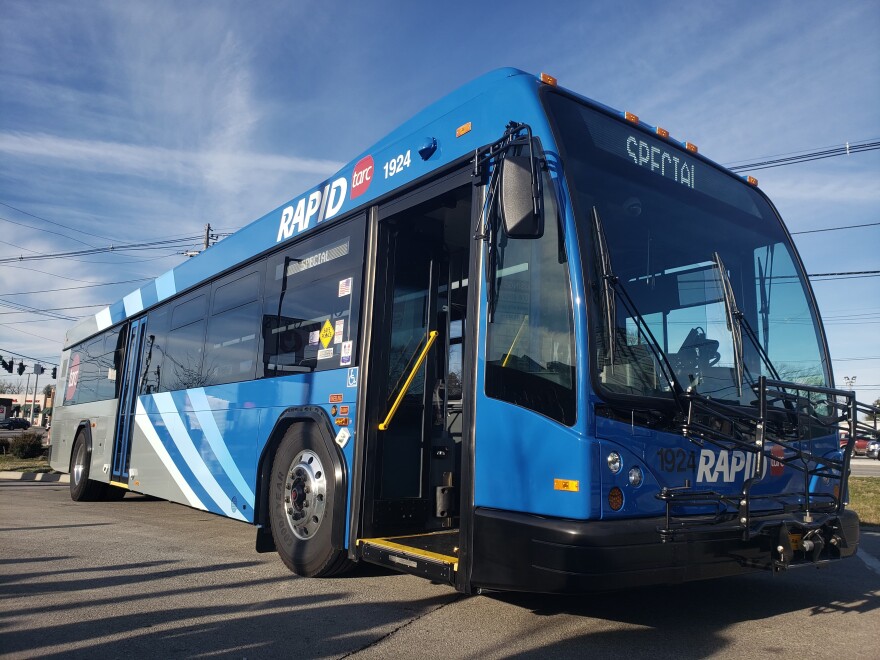Louisville launched a new bus rapid transit system on Monday that city officials expect will cut travel times along Dixie Highway, and improve job access.
Officials touted the $11.5 million system as the region’s first — it will shuttle people on Dixie Highway from Valley Station to downtown Louisville. Its nine buses will be in service from 4a.m. to 1 a.m. on weekdays and from 4:30 a.m. to midnight on weekends, traveling between bus stops every 15 to 30 minutes depending on the day and time. It is part of Louisville’s $35 million Dixie Highway Project, which aims to address traffic congestion, fatalities and inconveniences along Dixie. Transit Authority of River City Executive Director Ferdinand Risco Jr. said the highway corridor is one of TARC’s busiest routes, but the new rapid transit line will help residents and the city.
“Most importantly, this will be a more convenient service from Gene Synder all the way downtown, connecting more people to jobs in our central business district,” Risco said. “We are well on our way to establishing this city as a leading provider of mobility in the country — a standard for other cities to strive.”
The system also uses an Intelligent Transportation System that delays or speeds up traffic signals to improve buses’ travel time; Project Manager John Callihan said that will cause “manageable” delays for other vehicles. Callihan said engineers can review and adjust signal timing to address traffic congestion, but safety is a priority.
“You’re talking about a minute, maybe two — three minute delay, but that’s offset by a 30 percent reduction in the number of collisions along the corridor,” Callihan said, referring to safety projections from the Dixie Highway Project. “If we get a safer roadway out of this, then it’s worth those difficulties.”
Construction on the Dixie Highway Project started two years ago, and besides the bus rapid transit included adding medians, widening sidewalks and defining crosswalks along the corridor to improve transportation and safety. According to a news release, the highway carries around 60,000 vehicles daily and has a fatality rate that is three times higher than similar state roadways’. Construction on the entire project is expected to be completed this June.




